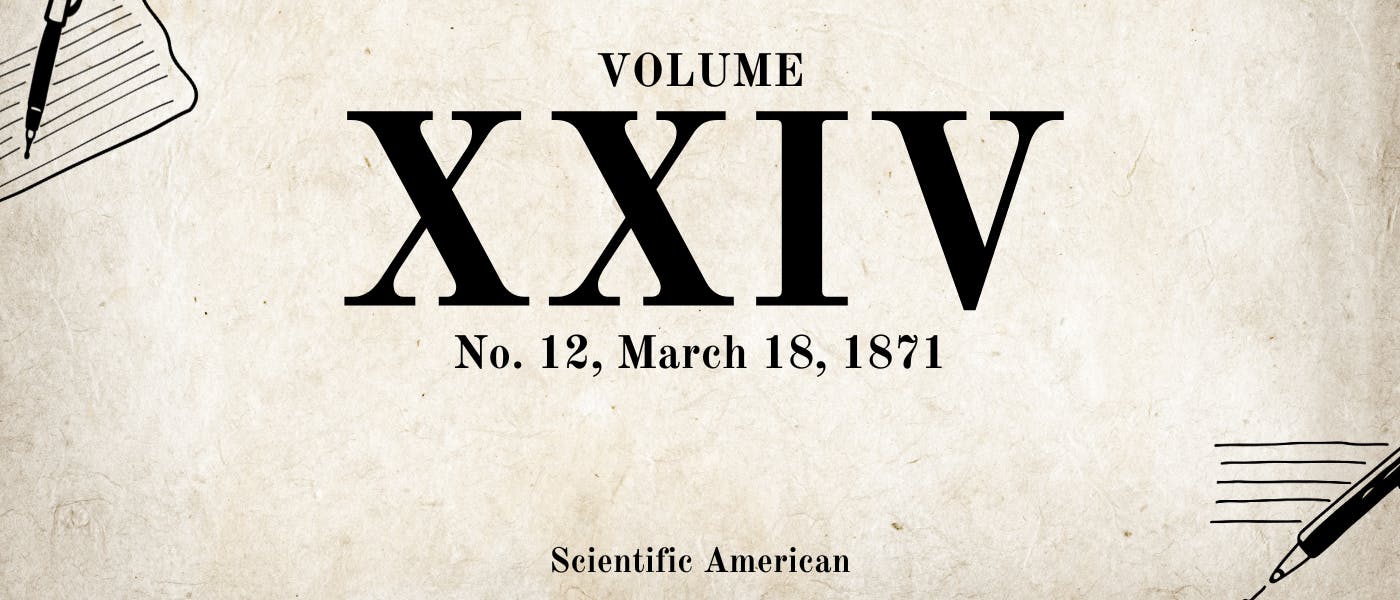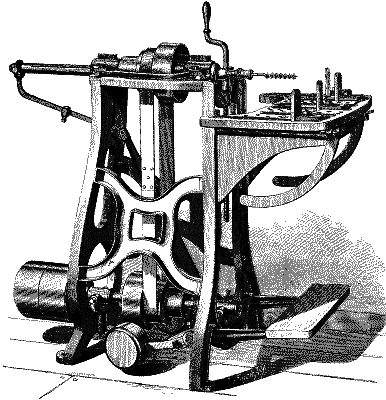Scientific American, Volume XXIV., No. 12, March 18, 1871 by Various, is part of the HackerNoon Books Series. You can jump to any chapter in this book here. Universal Boring Machine.
Universal Boring Machine.
Our readers will recollect an illustrated description of an universal wood-working machine, published on page 79, Vol. XIII. of the Scientific American. The machine herewith illustrated is manufactured by the same firm, and is a valuable addition to the many excellent wood-working machines now in use. A boring machine, though one of the simplest, is by no means an unimportant adjunct to a full outfit of wood-working machines. The one shown in our engraving is one of the most complete ever brought to our notice, and the great variety of work it is capable of performing, renders the name chosen for it peculiarly applicable. It is called the "Universal Boring Machine" because the most prominent feature of its construction is its power to bore a hole in any desired angle with the axis of the bit.
Any sized bit required is inserted into the chuck, which is adjustable to fit large and small shanks. The mandrel which carries the chuck is made to traverse by a foot lever, so as to bore any depth up to twelve inches. The mandrel is driven by belt from a cone pulley of three faces, which gives the proper speeds for different sized bits.
Slots and stops upon the table enable the work to be set at any desired angle on the horizontal plane, while the table can be set on an incline to any angle not exceeding forty-five degrees. The table is twenty-one inches wide, with fifteen inches slide, and it can be raised or lowered fifteen inches.
The countershaft rests in self-adjusting boxes, and has a tight and a loose pulley eight inches in diameter. The traversing mandrel is of the best quality of steel, and the machine is otherwise made of iron in a substantial manner.
The several adjustments enable the operator to do all kinds of light and heavy boring, with ease and with great rapidity.
This machine was awarded the first premium at the Cincinnati Industrial Exposition, in October, 1870, and was patented through the Scientific American Patent Agency, Aug. 16, 1870. It is manufactured by McBeth, Bentel and Margedant, of Hamilton, Ohio, whom address for machines rights to manufacture, or other information.
About HackerNoon Book Series: We bring you the most important technical, scientific, and insightful public domain books.
This book is part of the public domain. Various (2006). Scientific American, Volume XXIV., No. 12, March 18, 1871. Urbana, Illinois: Project Gutenberg. Retrieved https://www.gutenberg.org/cache/epub/19180/pg19180-images.html
This eBook is for the use of anyone anywhere at no cost and with almost no restrictions whatsoever. You may copy it, give it away or re-use it under the terms of the Project Gutenberg License included with this eBook or online at www.gutenberg.org, located at https://www.gutenberg.org/policy/license.html.


